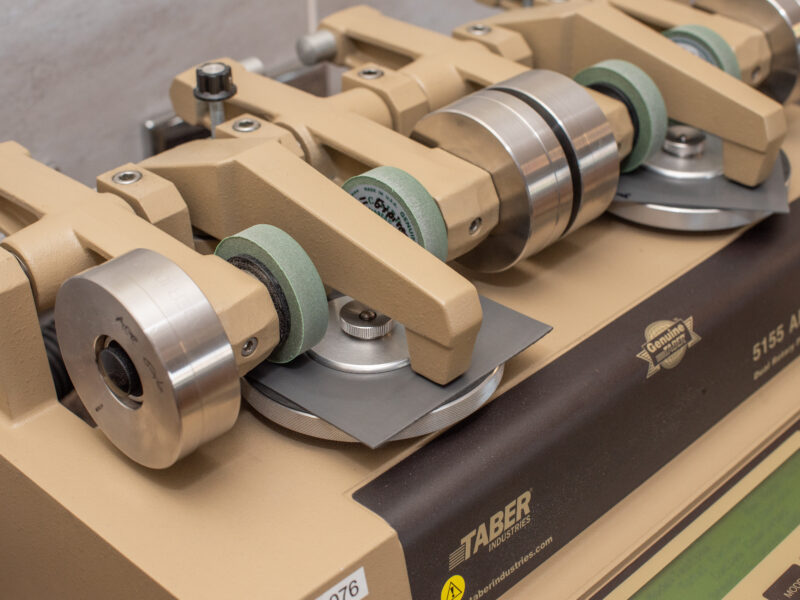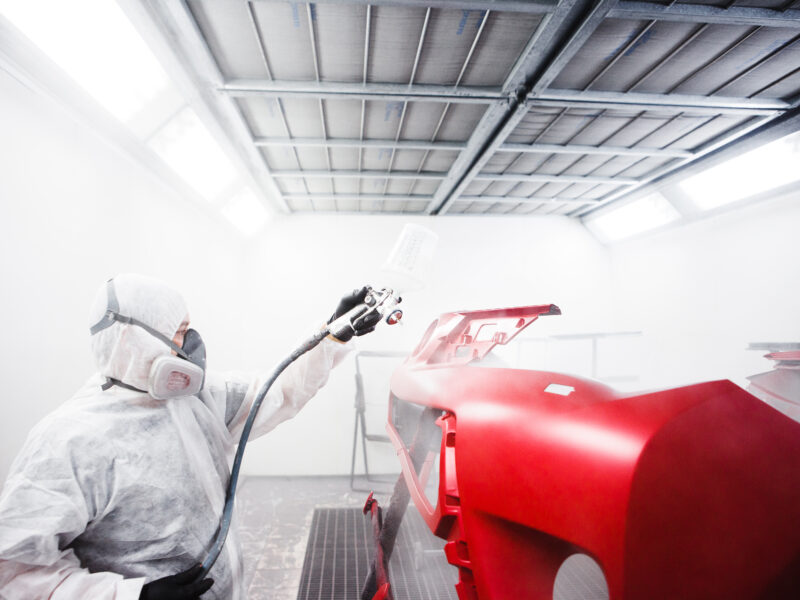Density, Abrasion & Roughness.
Taber Abrasion Testing
Taber Abrasion is an accelerated wear test to determine a materials resistance to abrasion. The test comprises of a sample being rotated on a platform with two abrasive wheels which come into contact & cause wear as the platform rotates. Taber abrasion can be conducted on a wide range of materials, coatings & textiles.
Resistance to abrasion is defined as the ability of a material to withstand mechanical action such as rubbing, scrapping or erosion. Abrasion can be evaluated by various means such as:
- Weight loss,
- Taber wear index.
- Volume loss.
- Wear cycles per mil.
- Depth of wear.
Test Methods include:
- ASTM D 4060.
- BS 5599.
- ISO 10074.
- MIL-A-8625

Surface Roughness
Roughness is defined as fine irregularities in the surface texture, which results from the inherent action of a production process. In protective coating applications there is a requirement to measure surface roughness to ensure a surface quality suitable for coating application.
Surface roughness measurements can also indicate processing stages that cause an increase in surface roughness, which may impact upon a products final suitability for application.
Testing specifications include:
- BATS 3211.
- ASTM D7127.
- ISO 4287.

Coating Weight / Density Testing
Coating Weight / Density Testing is the process of determining the mass per unit area of a given coating. This test is frequently used to assess anodise and chromate coatings on aluminium but is occasionally used to assess other coatings such as paint films. Coating density testing is a similar method for thicker films such as hard anodise.
Coating weight & density testing involves weighing a coated test piece of known area. Carefully stripping the coating in question, followed by a final weigh. The difference in weight in conjunction with the area is then used to determine the coating weight. To determine the density the thickness of the coating is also required.
Results obtained are important where weight of a component part has to be within a specific tolerance. This is particularly significant in the aerospace industry where overall weight shall be kept to a minimum.
Test Methods include:
- ASTM B 137



